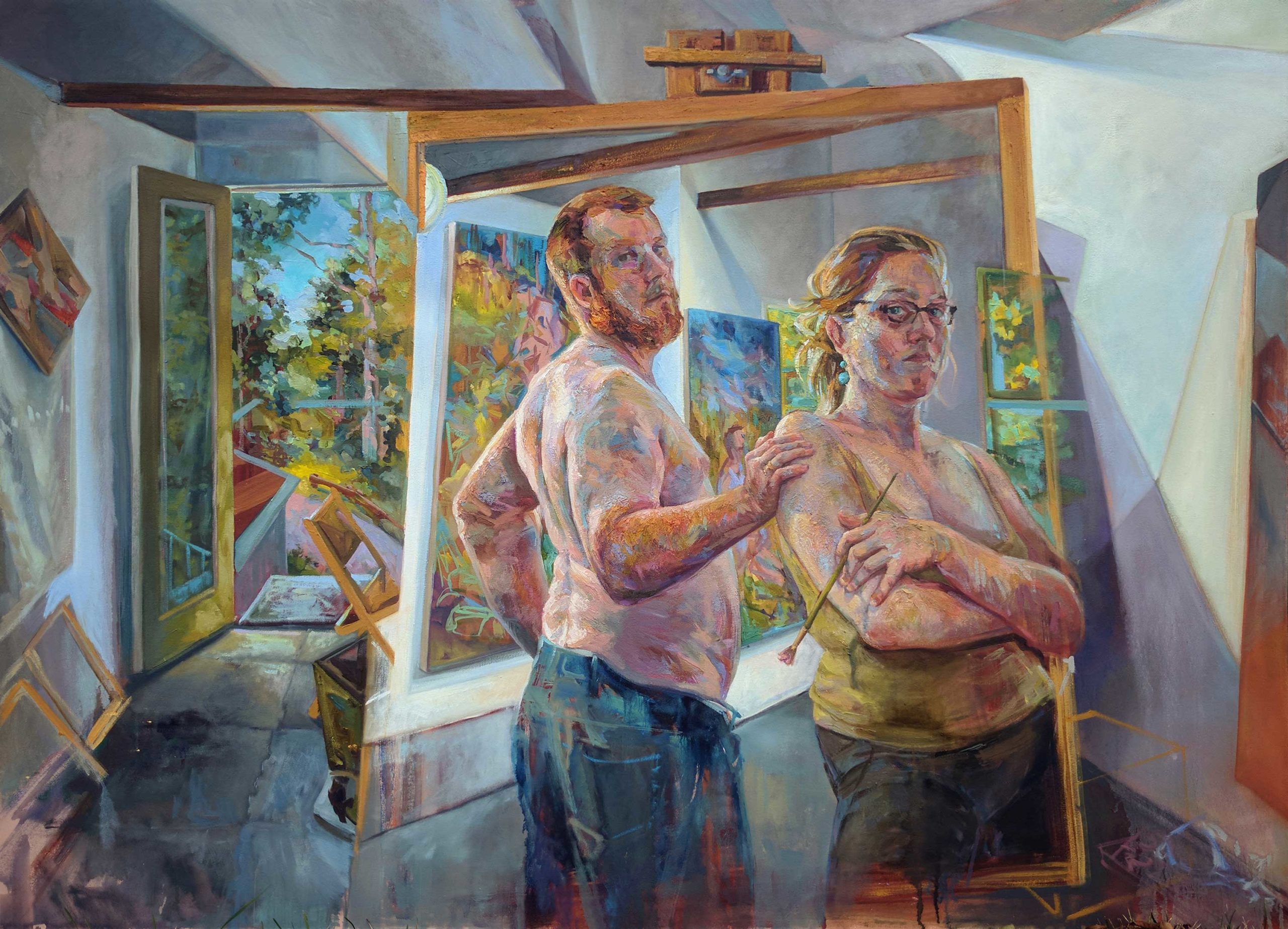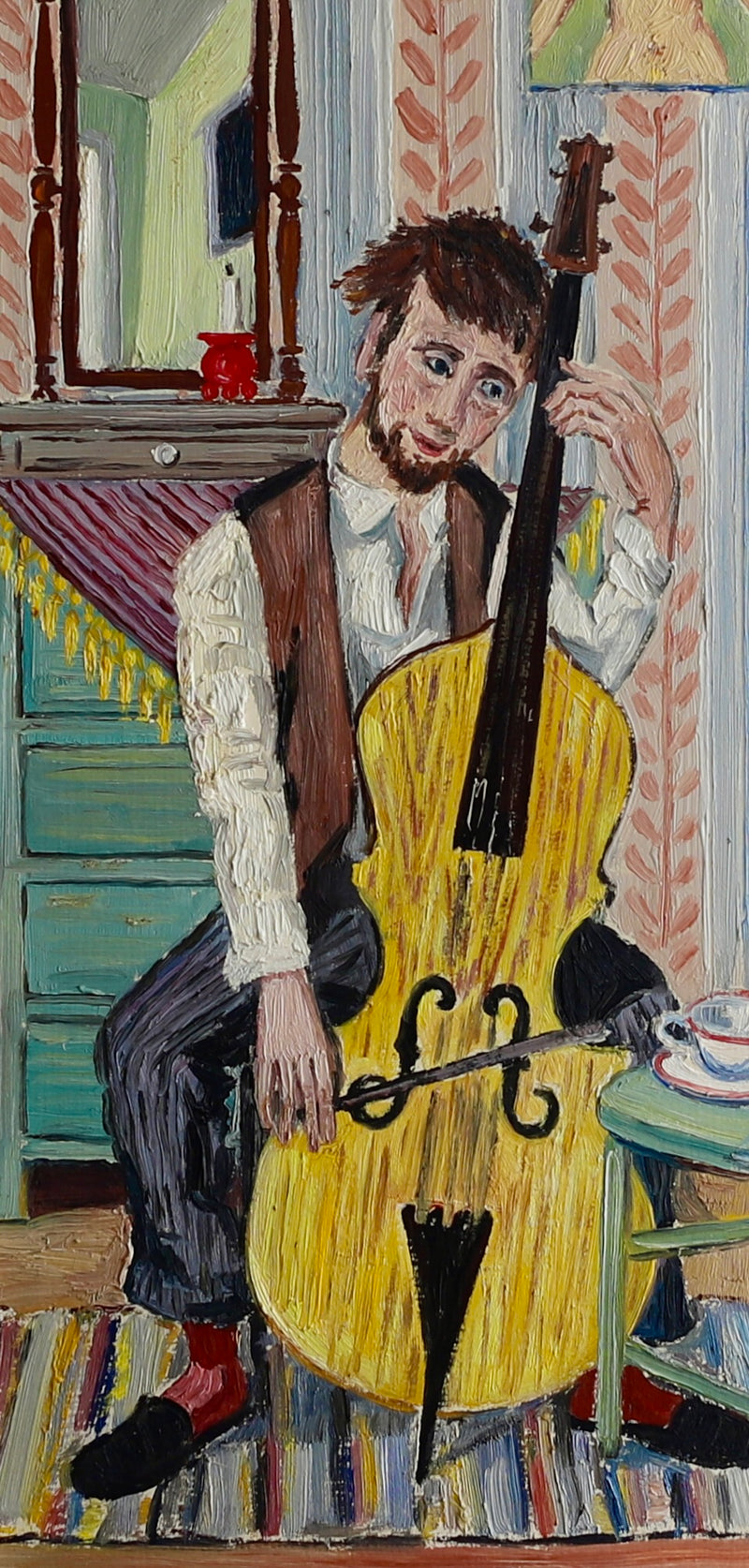Grasping Composition and Shade in Figurative Oil Painting
Grasping Composition and Shade in Figurative Oil Painting
Blog Article
The Development of Figurative Oil Painting: Recognizing Its Historic Relevance and Modern Interpretations
The advancement of figurative oil paint serves as an engaging lens through which to check out the interplay in between artistic expression and historic context. Contemporary artists, drawing from this abundant heritage, are now reinterpreting the human number in ways that test traditional narratives.
Beginnings of Figurative Oil Paint
The beginnings of figurative oil paint can be traced back to the early Renaissance in Europe, especially in the 15th century. This period marked a significant departure from the flat depictions and rigid types particular of middle ages art. Artists started to discover naturalism, emphasizing the human figure and its psychological expression. The advancement of oil paint permitted greater depth of color and information, boosting the realism and vibrancy of their work.

In this transformative era, numbers were usually shown within contextually abundant settings, showcasing not just their physical qualities however also their psychological states. Pioneers such as Jan van Eyck and Titian harnessed the tool's convenience, using layering methods to achieve luminosity and appearance. This technology assisted in the portrayal of detailed materials and the subtleties of complexion, contributing to the development of portrait and narrative scenes.
Furthermore, the Renaissance focus on humanism cultivated a gratitude for uniqueness, which consequently influenced musicians to develop more relatable and vibrant numbers - figurative oil painting. As a result, metaphorical oil painting emerged as an effective lorry for storytelling and emotional engagement, preparing for future imaginative movements and styles
Key Historical Movements
Substantial historical movements have actually formed the evolution of metaphorical oil painting, each contributing one-of-a-kind philosophies and techniques that expanded the tool's opportunities. The Renaissance noted a zero hour, emphasizing realism and the human kind, with artists like Leonardo da Vinci and Michelangelo pushing the borders of physiological accuracy and point of view. Following this, the Baroque era brought remarkable contrasts of light and darkness, exhibited by Caravaggio, that infused spiritual styles with extreme emotionality.
The 19th century introduced Romanticism and Realistic look, where artists such as Delacroix and Courbet tested classical suitables, focusing on private expression and daily life. The introduction of Impressionism even more changed the tool by stressing the effects of light and shade, leading to a separation from typical depiction.
In the very early 20th century, activities like Expressionism and Cubism redefined metaphorical painting with abstraction and the exploration of psychological deepness. Each of these motions not just showed the societal changes of their times yet likewise laid the groundwork for contemporary analyses. The interaction in between these historic motions has actually developed an abundant tapestry of designs and philosophies, influencing modern artists in their quest of recording the human experience on canvas.
Techniques and Products Advancement

Throughout the Baroque period, strategies such as chiaroscuro and sfumato arised, boosting the psychological resonance of figurative compositions. Musicians started to trying out glazes and impasto, manipulating appearance and brightness. By the 19th century, advancements like making use of pre-mixed paints in tubes revolutionized ease of access, allowing artists to paint en plein air and record the fleeting impacts of light.
The 20th century experienced the introduction of synthetic pigments and tools, which broadened the combination and altered the consistency of oil paints. In addition, the exploration of new application techniques, such as scheme blades and brushes of varying rigidity, further varied creative expression. Collectively, these developments mirror the evolving relationship between products, strategies, and the artistic vision inherent in metaphorical oil painting.

Contemporary Analyses
Contemporary analyses of figurative oil paint show a vibrant discussion in between custom and innovation, where artists challenge established standards and explore varied themes. This advancement manifests in numerous Homepage means, as modern musicians blend classical methods with contemporary principles, frequently attending to social, political, and personal stories.
Several practitioners draw ideas from historic jobs, yet they infuse their pieces with contemporary point of views, using the human type as a vehicle for discourse on identity, sex, and culture. Artists progressively try out abstraction, distortion, and multimedias, which permits for a broader interpretation of the number and its context.
Additionally, making use of vibrant color combinations and unique compositions typically offers to interfere with conventional watching experiences, prompting vital engagement from target markets. This shift in emphasis extends past aesthetic appeals; it mirrors an expanding recognition of the complexities of human experience in an interconnected world.
As metaphorical oil paint proceeds to evolve, it stays an important tool for checking out their website the nuances of modern life, symbolizing both a regard for heritage and a commitment to progressive thought. The result is an abundant tapestry of expression that resonates with the complexities of the modern-day human condition.
Effect On Modern Art
The influence of metaphorical oil paint on modern art is profound, as it has continually influenced a myriad of creative motions and practices throughout the 20th and 21st centuries. From Expressionism to Surrealism and past, the expedition of the human figure has actually continued to be a central motif, permitting artists to communicate complicated feelings and narratives. This click here to find out more focus on metaphorical representation has brought about a re-examination of typical strategies, resulting in cutting-edge methods that mix realism with abstraction.
Furthermore, contemporary musicians have accepted metaphorical oil painting as a way to address social and political concerns, making use of the tool to challenge perceptions of sex, identity, and culture. The revival of passion in figurative operate in current years reflects a hoping for link in a progressively electronic globe, where human experience and feeling are extremely important.
Additionally, the discussion between metaphorical oil paint and contemporary art is evident in the works of musicians such as Kehinde Wiley and Jenny Saville, that attract on historic recommendations while infusing their pieces with modern significance. Inevitably, figurative oil paint proceeds to shape and redefine modern artistic expression, emphasizing its enduring value in the art world.
Verdict
The development of figurative oil painting underscores its historic significance and flexibility throughout numerous creative movements. From the naturalism of the Renaissance to the emotive expressions of the Baroque and the ingenious methods of modernity, this tool has consistently changed. Contemporary interpretations mirror unique make-ups and lively shades, promoting important interaction with political and social themes. Ultimately, figurative oil paint continues to be a crucial tool for exploring the human experience, resonating greatly in today's digital landscape.
The development of metaphorical oil painting offers as an engaging lens through which to examine the interplay between imaginative expression and historic context.Considerable historic activities have actually formed the evolution of metaphorical oil painting, each adding one-of-a-kind ideologies and methods that expanded the tool's possibilities.As historical movements formed the trajectory of figurative oil paint, the methods and products utilized by musicians have actually also undergone significant improvements. figurative oil painting.The influence of metaphorical oil painting on modern art is profound, as it has actually constantly influenced a myriad of artistic motions and methods throughout the 21st and 20th centuries.The evolution of metaphorical oil painting emphasizes its historical importance and versatility across different imaginative movements
Report this page